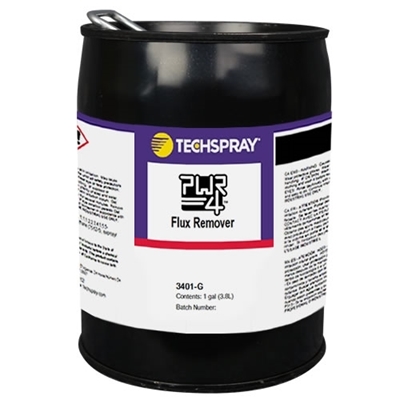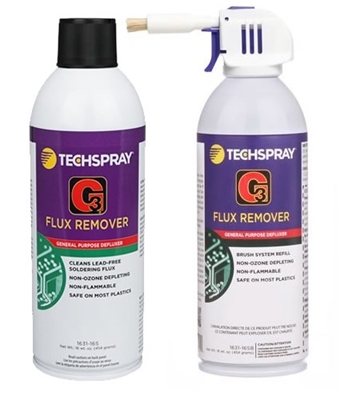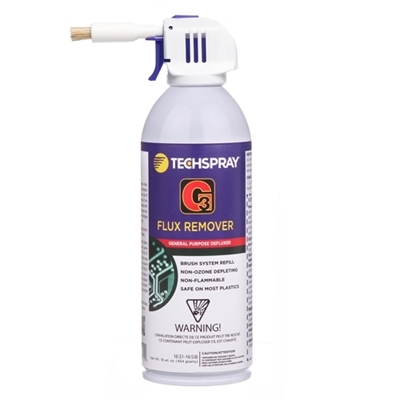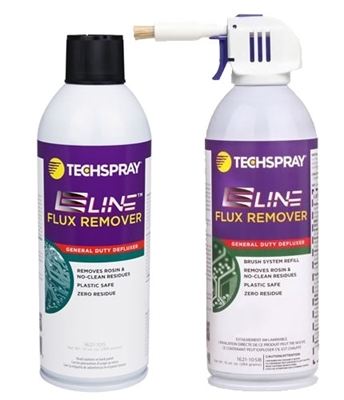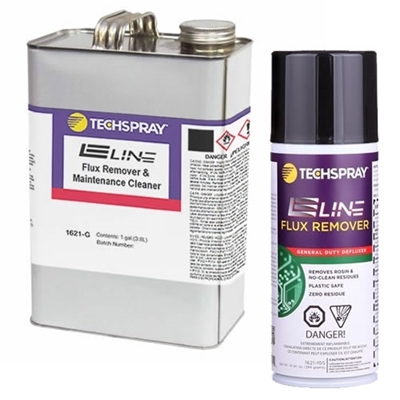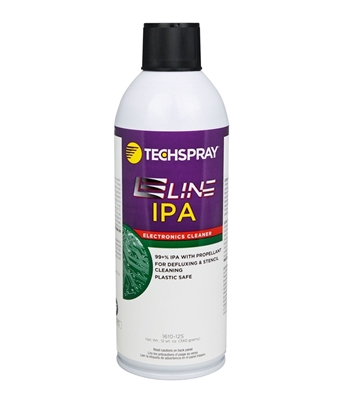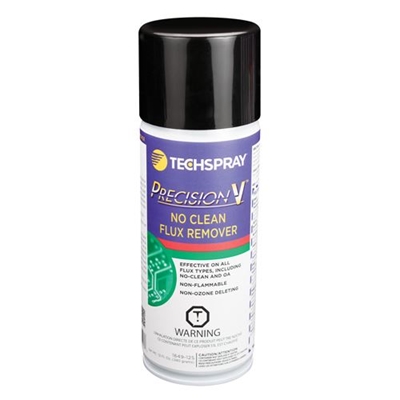Flux Remover Video How-To Guide
CLEAN WITH OVERALL SPRAY | CLEAN WITH EXTENSION TUBE / STRAW | CLEAN WITH BRUSH ATTACHMENT
Hi, this is Kevin Pawlowski, application specialist with Techspray. Today, I’m going to take you through the best practices for cleaning printed circuit boards with a flux remover.
A flux remover cleans off flux left behind after the soldering process. That’s important because flux residue can cause corrosion or create what’s called “dendrites”, which are ionic particles chained together between contact points. Dendrites can cause current leakage and ever short out the board.
Isopropyl alcohol is the most common solvent used for removing flux, but Techspray offers flux removers that can do the job more effectively and efficiently.
One common way to clean flux is the wet a swab with isopropyl alcohol and wipe around the solder joint. This isn’t the most effective way to clean a PCB because it often just moves around the residues. Keep in mind that flux residues don’t evaporate off the surface with the solvent. Residues like that have to be physically removed.
I will be demonstrating with our popular aerosol packaging. Aerosols have the advantage of being sealed, so they are always free of contamination, don’t evaporate away as they sit on your bench, and the pressure provides extra agitation.
Remember to disconnect power to the PCB including any on-board batteries. Also make sure you use proper procedures, like grounding yourself with a wrist strap, to avoid static that can damage sensitive components.
I suggest you use safety glasses. If you are sensitive to solvents, you might consider using nitrile glove. Solvent cleaners will have a tendency to dry out your skin.
Overall spray
Without a straw or brush, you can spray over a wide area of the PCB. This is a good way to clean the board overall, or as a final rinse after the cleaning process. Always hold the PCB at an angle so the solvent and residues have a chance to run off.
If you need to clean specific areas of the board, keep the area wet with solvent. Flux residues that are only partially dissolved can settle down to form white residues, which can be even more difficult to clean than the original flux. If you keep the board wet, it will make it easier to rinse everything off at the end of the process.
You will want to focus the spray over solder joint areas, where residues will be more concentrated. Allow the solvent to flow around and under components for more thorough cleaning.
Extension tube / straw
Every can of flux remover comes with this little extension tube or straw. This allows you to spray with pinpoint accuracy. It also increases the spray pressure for more agitation. Feel free to trim the straw if a shorter one is easier to work with.
You first insert the straw into the spray button or trigger sprayer, depending on which product you have. Make sure you point it away from your eyes in case it accidently sprays.
You can use the straw to focus your cleaning on just one area of the board. For example, around a component you just replaced. For the most thorough cleaning method, spray on each corner of the component, with drives the solvent under it. Then spray over the leads.
Finally, remove the straw and rinse the entire area.
If you have an aerosol can with a trigger sprayer, the straw can be stored in the back, or under the trigger to lock and prevent accidental spraying.
Brush cleaning
When you have stubborn flux residues, you can use a brush, swab or wipe to provide extra agitation. Remember, if you do that, make sure you finish off with a rinse.
Some Techspray flux removers come with a brush attachment. The solvent flows through the brush, so you can scrub and saturate the area with solvent at the same time.
You have 2 ways to use this brush…
You can directly clean around components. Just pull the trigger to release solvent as you move the brush over heavily fluxed areas. Make sure you gently scrub so you don’t damage fine leads. Keep the area wet as you go through your cleaning process. When you are done, remove the brush and give the PCB a final rinse.
If you have a very isolated area to clean, and you don’t want to risk cross contamination, you can use a wipe to absorb the flux residues. Simply place the wipe over the component, pull the trigger to release the solvent, and scrub through the wipe. This breaks up the flux residues and allows them to absorb into the wipe.
So if you follow these steps, you should have clean and reliable board. If you have any questions, feel to call or email us, or go to techspray.com.


